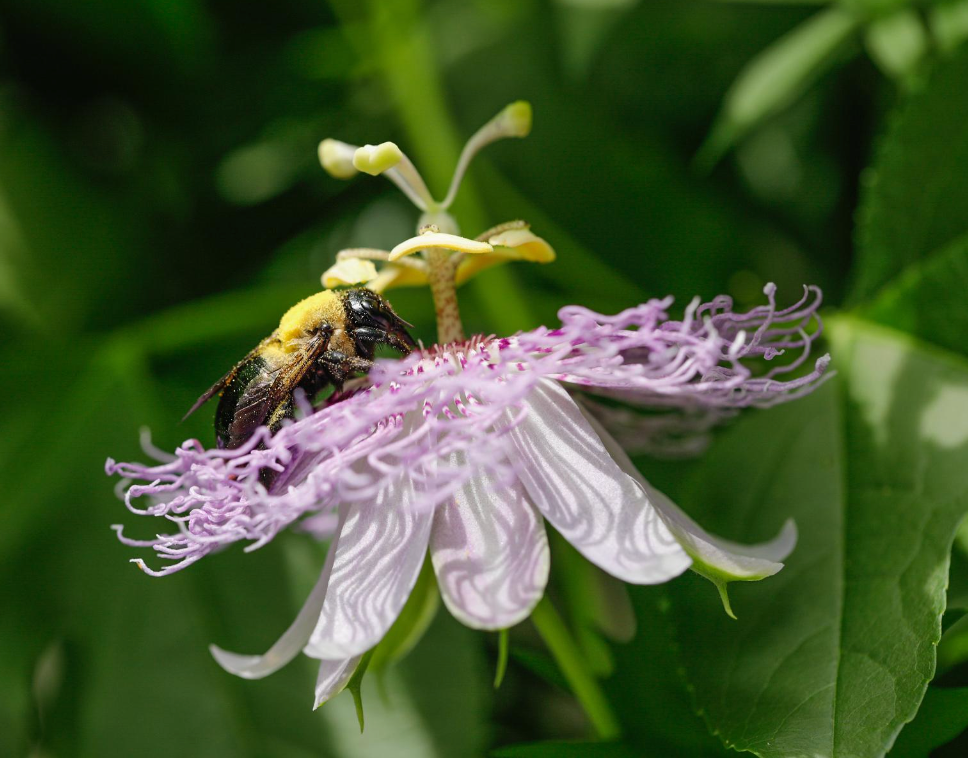Bees and their superpowers
Published 10:48 am Wednesday, January 18, 2023
|
Getting your Trinity Audio player ready...
|
Did you know when a honeybee stings you, it usually dies? And that it’s always a female bee that stings? So, the honeybee really doesn’t want to sting you.
While bumble bees can also sting (and not die), they are docile and really don’t want anything to do with us. So why does the honeybee die, and the bumble bee doesn’t? The honeybee has barbs on its stinger unlike most other bees, which pull part of its body off when it flies away. Kinda disgusting, but that’s the way Mother Nature works.
Welcome to the fascinating world of bees, one of our most misunderstood underdog species. While honeybees are not native to the United States, the European honeybee is the state insect of North Carolina. Interesting.
Bees are our most important pollinators. Ok, let’s back up. What exactly is a pollinator? Well, when an insect, or another animal, moves from flower to flower looking for food, they spread pollen (the yellow stuff) between the flowers. This fertilizes the plant allowing it to make baby plants.
Lots of other insects and animals pollinate. Can you name a few? Bats, flies, lizards, hummingbirds, and butterflies are all pollinators.
Bees pollinate a lot of the fruits and vegetables we eat. In fact, one-third of the fruits and vegetables we eat are pollinated by bees. Apples, watermelon, peppers, blueberries, and almonds are a few.
They pollinate many of our native plants which produce the berries and nuts our wildlife eats. Birds like thrushes and cardinals, bears, opossums and almost all wildlife eat pollinated food. Even cows eat alfalfa pollinated by bees. A world without bees would be boring and unhealthy.
By pollinating our native plants, pollinators make baby birds possible. Why is that? Baby birds generally only eat caterpillars when they are first born, and caterpillars for the most part only eat native plants. No native plants, no caterpillars, no baby birds. That would be very sad indeed!
Have you ever wondered why bumblebees buzz? They are producing a sound wave to shake the pollen off a flower onto their bodies. Pretty clever!
How do they know which flower has nectar? Ah, they have an amazing sense of smell, even better than sniffer dogs. In some studies, bees have been trained to detect explosives and even diseases in humans. This is definitely a superpower of bees.
Where do they go in the winter? Many native bees overwinter in small holes in the ground, in piles of dead leaves or in the woody stems of dead flowers. Honeybees hunker in their hive during the colder months with a typical hive having 50,000 bees. In the hive, the entire community of bees work together. Each bee inherently understands the health of the hive is based on communal work, not the individual bee. A great example for all of us humans. We are all connected on this planet and can accomplish a lot more by working together. But you already knew that.
It takes honeybees 55,000 flight hours to make one jar of honey, and one of the coolest things about honeybees is their dance, called the waggle. They dance in a figure eight to tell their co-workers where to find food. So do the waggle! Maybe we can even go viral!
How can you help our bees? Leave leaves in your yard in the winter and limit the use of pesticides, or better yet, don’t use them. Pesticides kill all the bugs, not just the ones you don’t want.
Plant native flowers. If you are interested in learning more about native plants, check out the Gardening for Life Project at https://www.gardeningforlifeproject.org/. Look for plants like milkweed, coneflower, asters and native grasses. With over 3,900 native plants in N.C., you can surely find some you like. Remember, you will be helping the bees and other pollinators – plus all those baby birds!
Loti Woods is a founder of Weiler Woods for Wildlife, a nonprofit organization whose mission is to inspire folks to be champions for wildlife’s underdogs, especially the endangered. To learn more, visit weilerwoodsforwildlife.com.

A bee covered in pollen on a passionflower (Photo by Corrie Woods)


